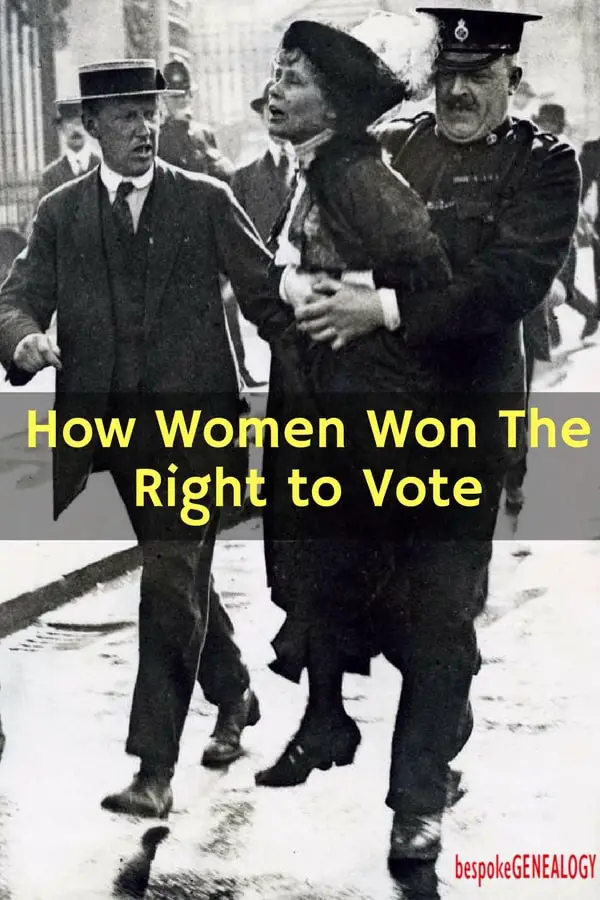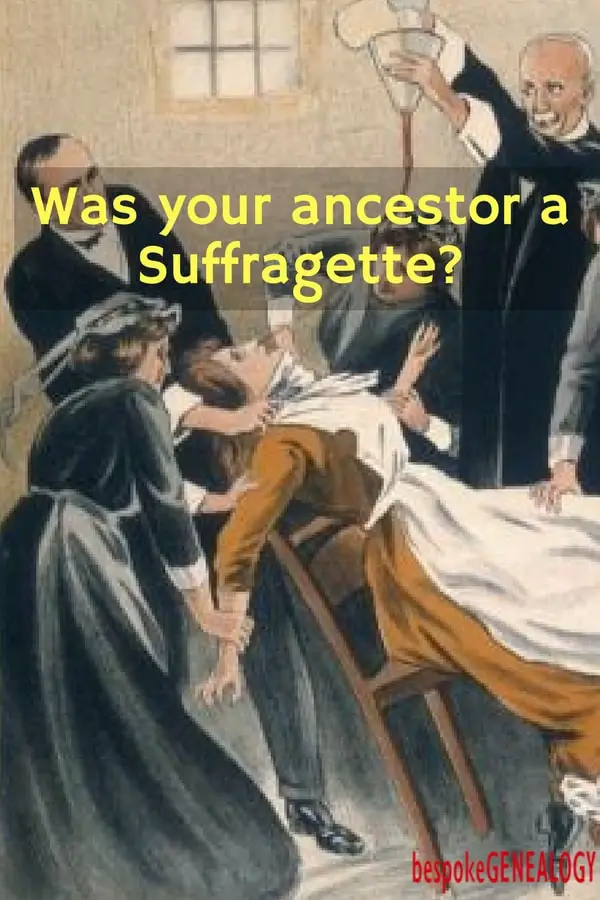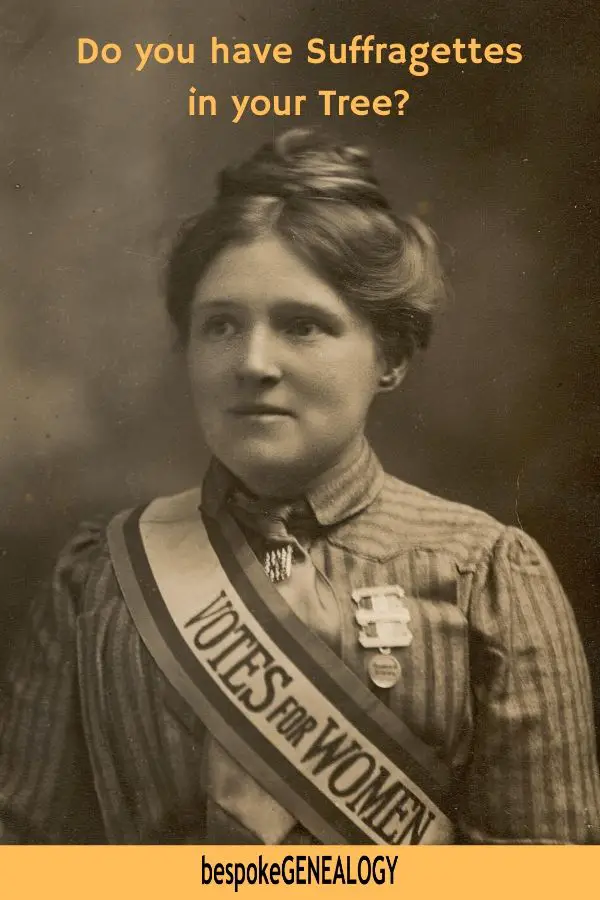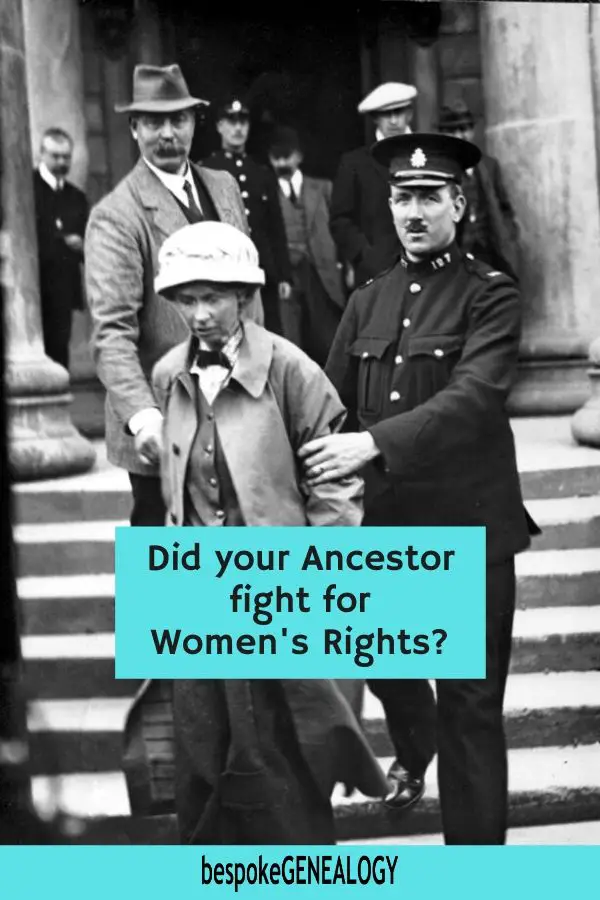
2018 marks 100 years since women won the right to vote in the United Kingdom. To celebrate that fact, FindMyPast has a new Suffragette Collection.
The fight for votes for women
The fight for women’s votes in the UK became very intense in the early part of the 20th Century, especially after the formation of the Women’s Social and Political Union (WSPU) in 1903 in Manchester. This organization was led by the formidable Emmeline Pankhust and her daughters Christabel and Sylvia and members became known as Suffragettes.
As well as protesting outside government buildings, the suffragettes also used more militant direct action to get their message across including arson of unoccupied buildings, letter bombs, smashing windows in department stores and cutting telephone lines. These tactics often resulted in arrest and once in prison, suffragettes would often go on hunger strike resulting in them being force fed. This led to a lot of sympathy with the public. The most well known incident in the campaign was the death of suffragette Emily Davison at the Derby of 1913 after she was trampled on by the Kings horse.
The First World War and the end of the campaign
The campaign was abandoned in 1914 with the outbreak of the First World War. During the war, women were called on to undertake jobs normally done by the men who were now in the armed forces. At war’s end in 1918, the franchise was extended and women over the age of 30 were now able to vote.
Historians seem to disagree as to whether it was the suffragette campaign or the fact that women were doing the work of men during the war that led to universal suffrage. In my view, it was both. I remember discussing this with my late aunt in the 1970s. She had been a teenager in the 1910s and remembered that although many people (male and female) disapproved of the violence and some of the tactics used by the movement, they were often very sympathetic to the cause and that it was grossly unfair that women did not have the right to vote.
So, was your ancestor a suffragette? Check out the new Suffragette Collection at FindMyPast, in conjunction with the National Archives. Included in this historic collection are arrest records, parliamentary papers, watch lists, personal statements, reports of force-feeding, transcripts of speeches and much more.
Good luck with your research.
Please pin a pin to Pinterest:










Leave A Comment